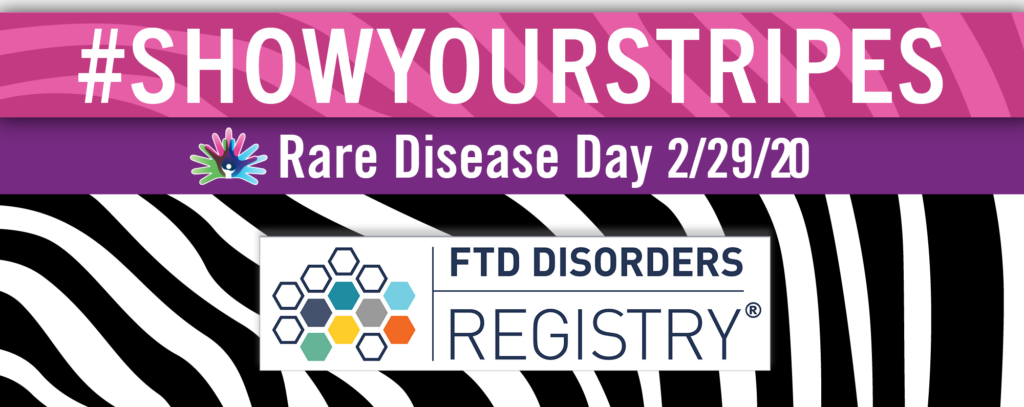PRESS & NEWS
#ShowYourStripes on Rare Disease Day: February 29, 2020

Rare Disease Day is recognized annually around the world on the last day of February to raise awareness about rare diseases and the issues patients face. Because of leap year, this special day will be recognized Saturday on the rarest of days in the calendar – February 29, 2020. Ironically, more than 400 million people globally…
Rare Disease Day is recognized annually around the world on the last day of February to raise awareness about rare diseases and the issues patients face. Because of leap year, this special day will be recognized Saturday on the rarest of days in the calendar — February 29, 2020.
Ironically, more than 400 million people globally have been diagnosed with a rare disease, making rare diseases, as a whole, not so rare. With an estimated 60,000 Americans diagnosed with frontotemporal degeneration (FTD), it is one of more than 7,000 known rare diseases.
According to the National Institute of Health (NIH), a rare disease in the United States is defined as a condition that affects fewer than 200,000 people. This definition was created by Congress in the Orphan Drug Act of 1983. Rare diseases became known as orphan diseases because drug companies were not interested in adopting them to develop treatments. The Orphan Drug Act created financial incentives to encourage companies to develop new drugs for rare diseases. The rare disease definition was needed to establish which conditions would qualify for the new incentive programs.
Other countries have their own official definitions of a rare disease. In the European Union (EU), a disease is defined as rare when it affects fewer than 1 in 2,000 people.
FTD is not only rare, but it is a fatal neurodegenerative brain disease that is the most common cause of dementia in people under the age of 60. It is characterized by a progressive degeneration of the frontal portions of the brain, the areas responsible for language and behavior.
Join the Registry. Share your story. Advance the science.
The FTD Disorders Registry (FTDDR) is a powerful tool in the movement to create therapies and find a cure for those affected by FTD. As an online database, the Registry collects information about those affected by all types of FTD, including:
- behavioral variant FTD (bvFTD)
- primary progressive aphasia (PPA)
- progressive supranuclear palsy (PSP)
- corticobasal degeneration (CBD)
- FTD with motor neuron disease (also called FTD-ALS)
Persons diagnosed, caregivers (current and former), family members, and friends can all participate.
The Registry is both an international Contact Registry and a North American Research Registry. Research Registry enrollment is limited to the United States and certain Canadian provinces. All persons who have completed research registration are automatically members of the Contact Registry.
Currently, there are no known treatments nor cures for any of the FTD disorders. FTDDR seeks to change the course of the disease and put an end to FTD. You can help advance the science and move faster toward finding treatments and cures.
There are numerous organizations seeking to raise awareness and funds while also working with researchers and pharmaceutical firms to find treatments and cures for these rare diseases.
Everyone has their own unique stripes. This Saturday, February 29, 2020, celebrate Rare Disease Day and #ShowYourStripes
Join the Registry. Share your story. Advance the science.
Together we can find a cure for ftd
The FTD Disorders Registry is a powerful tool in the movement to create therapies and find a cure. Together we can help change the course of the disease and put an end to FTD.
Your privacy is important! We promise to protect it. We will not share your contact information.



